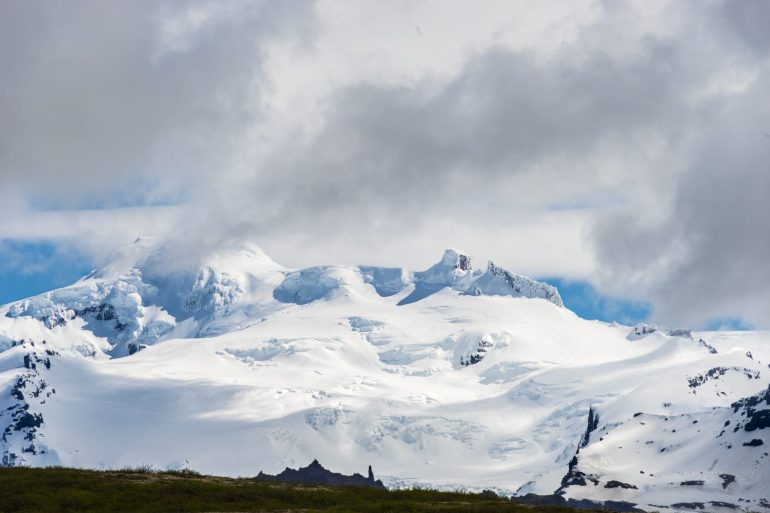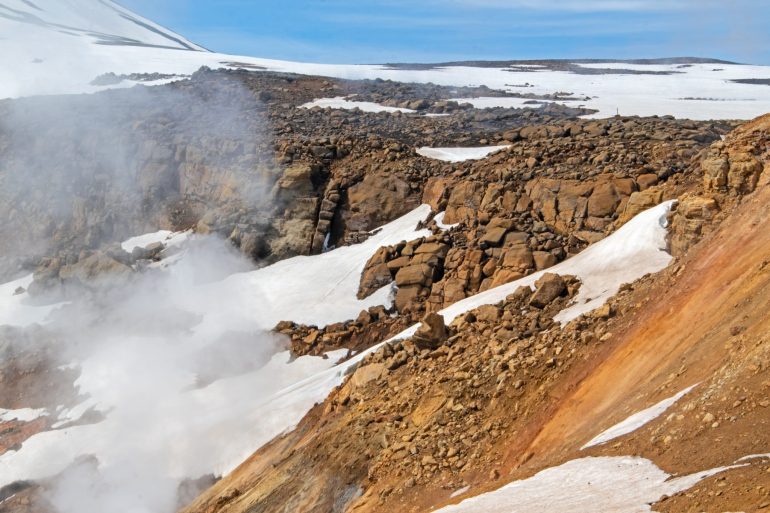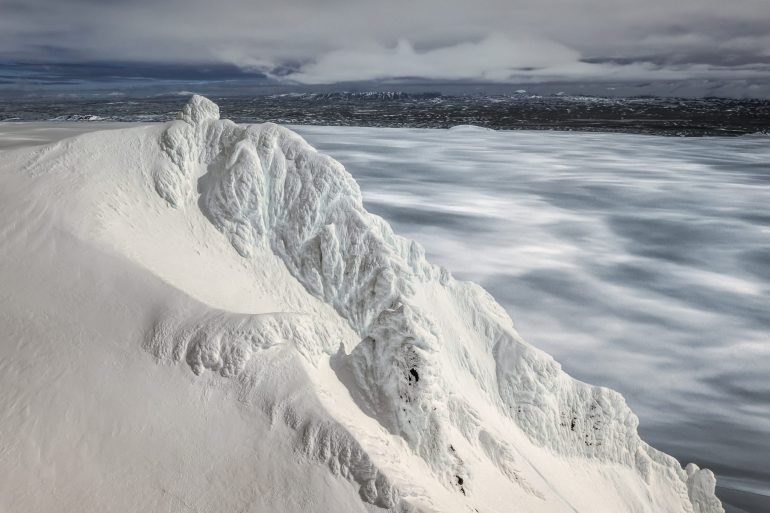Known as the land of ice and fire, Iceland is one of the planet’s youngest landmasses and among its most geologically volatile. This captivating island, the second largest in Europe, is renowned for its glaciers, waterfalls, and, of course, for its high volcanic activity.
Many of Iceland’s highest mountains are volcanoes, formed not by moving tectonic plates or by uplift and erosion, but the accumulation of their own eruptive products. Think lava, ash, and other volcanic materials. These landmarks do not just dot the landscape; they serve as the very backbone of Iceland, narrating ancient stories of earth’s formation and the continuous, resolute power of nature.
Let’s embark on a journey, traversing the vast expanses of this terrain of fire and ice, and explore the unique mountains of Iceland.
Oraefajokull

The Oraefajokull volcano in Iceland (Credit: Flottmynd via Getty Images)
Topping the list of the highest mountains in Iceland is Oraefajokull, an ice-covered volcano and host of Iceland’s highest peak, Hvannadalshnúkur, at approximately 6,920 feet. Known as ‘wasteland glacier’, it’s cloaked within the Vatnajokull National Park, which earned a prestigious spot on the UNESCO World Heritage List in 2019. Despite its chilling name and façade, Oraefajokull holds a fiery history with eruptions noted in 1362 and 1728.
Bardarbunga

Volcanic eruption at the Bardarbunga Volcano, Iceland. (Credit: Arctic-Images via Getty Images)
Among Iceland’s highest mountains is Bardarbunga, stealthily located in the vast Vatnajokull National Park. This active subglacial stratovolcano, standing around 6,591 feet above sea level, was relatively unknown until recent studies linked it to many tephra layers previously attributed to other volcanoes, highlighting its significant geological role in the landscape of the tallest mountains in Iceland.
Kverkfjoll

Icelandic volcanoes. (Credit: Edda Dupree via Getty Images)
In third place among the tallest mountains in Iceland, Kverkfjoll, a large central volcano, presents a formidable height of around 6,350 feet. The mountains, characterised by two ice-filled calderas, last erupted in 1968, showcasing Iceland’s vibrant geological activity amidst its frozen landscapes.
Snaefell

Winter scene on the coastline at Budir, Snaefellness, Iceland. (Credit: Southern Lightscapes-Australia via Getty Images)
As the fourth in line among the biggest mountains of Iceland, Mount Snaefell stands proudly at 6,013 feet, distinguished as the highest non-glacial mountain in Iceland. With uncertain volcanic activity, it offers an opportunity to witness the majestic herds of reindeer in its surroundings during late summer.
Hofsjokull

Glacial Ice and frost, Hofsfjokull, Iceland. (Credit: Arctic-Images via Getty Images)
Hofsjokull, standing at around 5,791 feet, adds to the list of the highest mountains in Iceland. Beyond its height, it holds the title of the largest active volcano in the country, its glacier contributing as a significant source to Iceland’s longest river, the Thjorsa.
Snaefellsjokull

The Snæfellsjökull volcano, Iceland. (Credit: Christophe Lehenaff via Getty Images)
Lastly, Snaefellsjokull, albeit further down the list of the highest mountains in Iceland, holds historical and literary significance as the setting for Jules Verne’s “Journey to the Center of the Earth.” Standing at approximately 4,744 feet, it’s a prominent site for birdwatching, especially for spotting guillemot, razorbill, and fulmar along the coastline.
The Biggest Mountains of Iceland

Grýla is said to live in the frozen Icelandic mountains (Credit: Beerpixs via Getty Images)
From the towering peaks of Oraefajokull to the serene summits of Snaefellsjokull, Iceland’s highest mountains stand as quiet guardians of the nation’s profound geological legacy and the delicate balance of ice and fire. Beyond their impressive stature and grandeur, each mountain peak unravels a rich tapestry of ancient eruptions, timeless sagas, and the mesmerising interplay between glaciers and volcanoes. They echo the profound mysteries and marvels of Iceland’s most eminent mountains, each one a testament to the enduring and awe-inspiring forces of nature that have shaped and continue to shape this extraordinary island nation.











